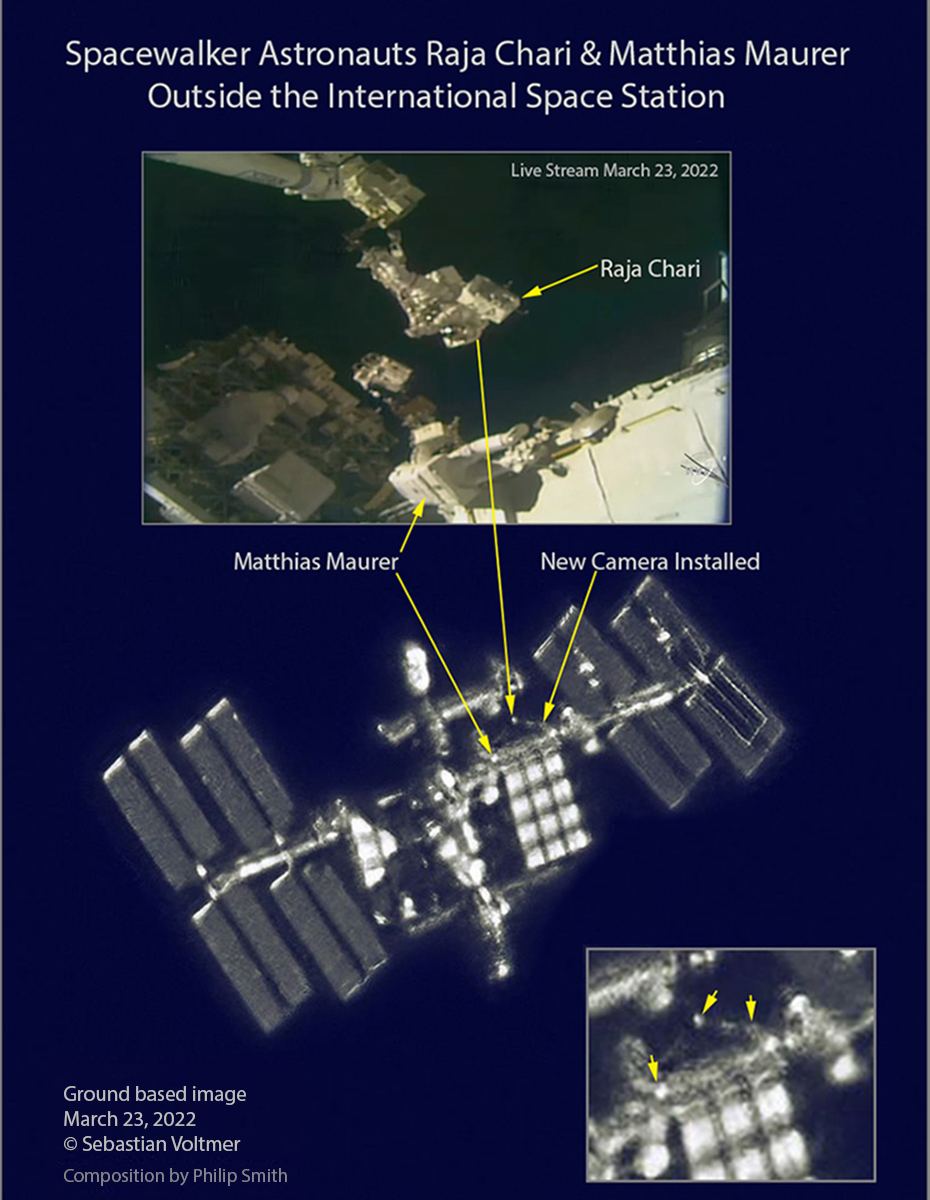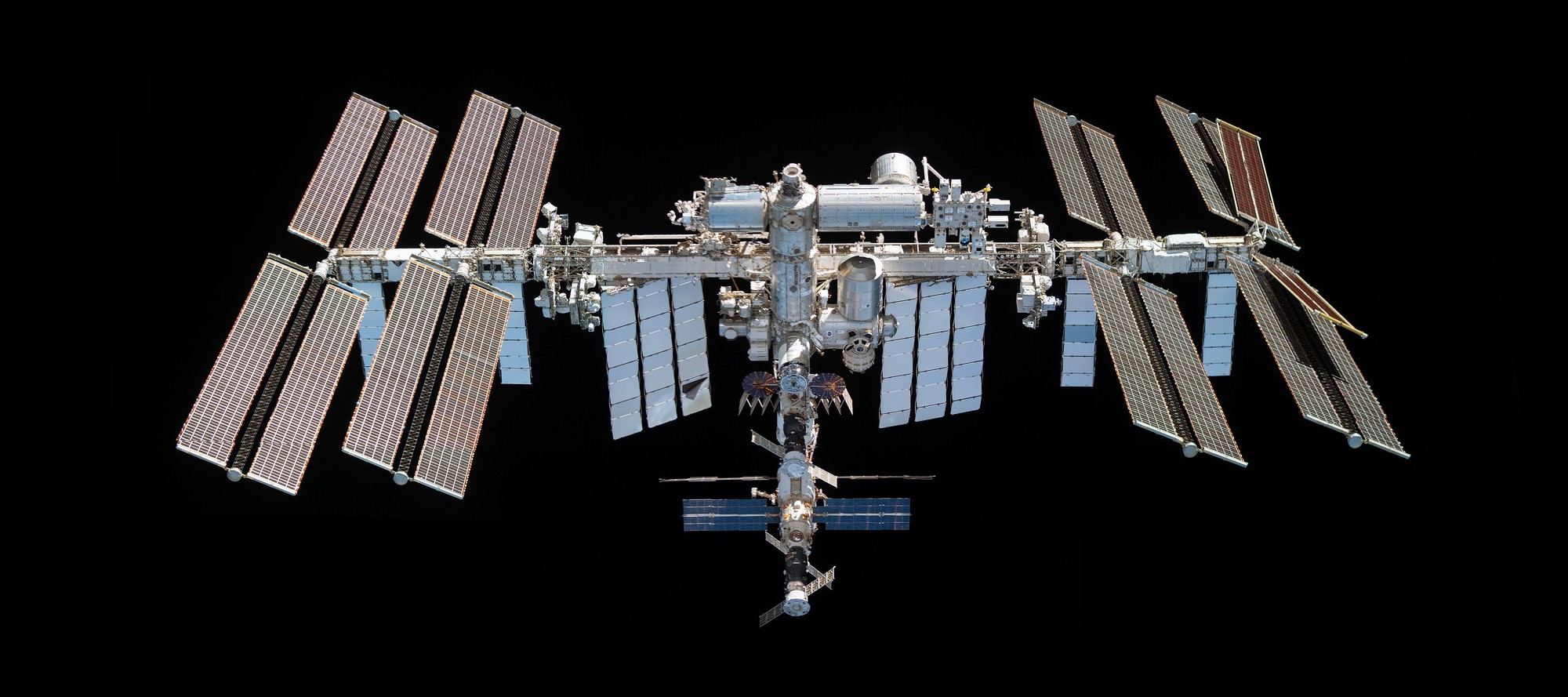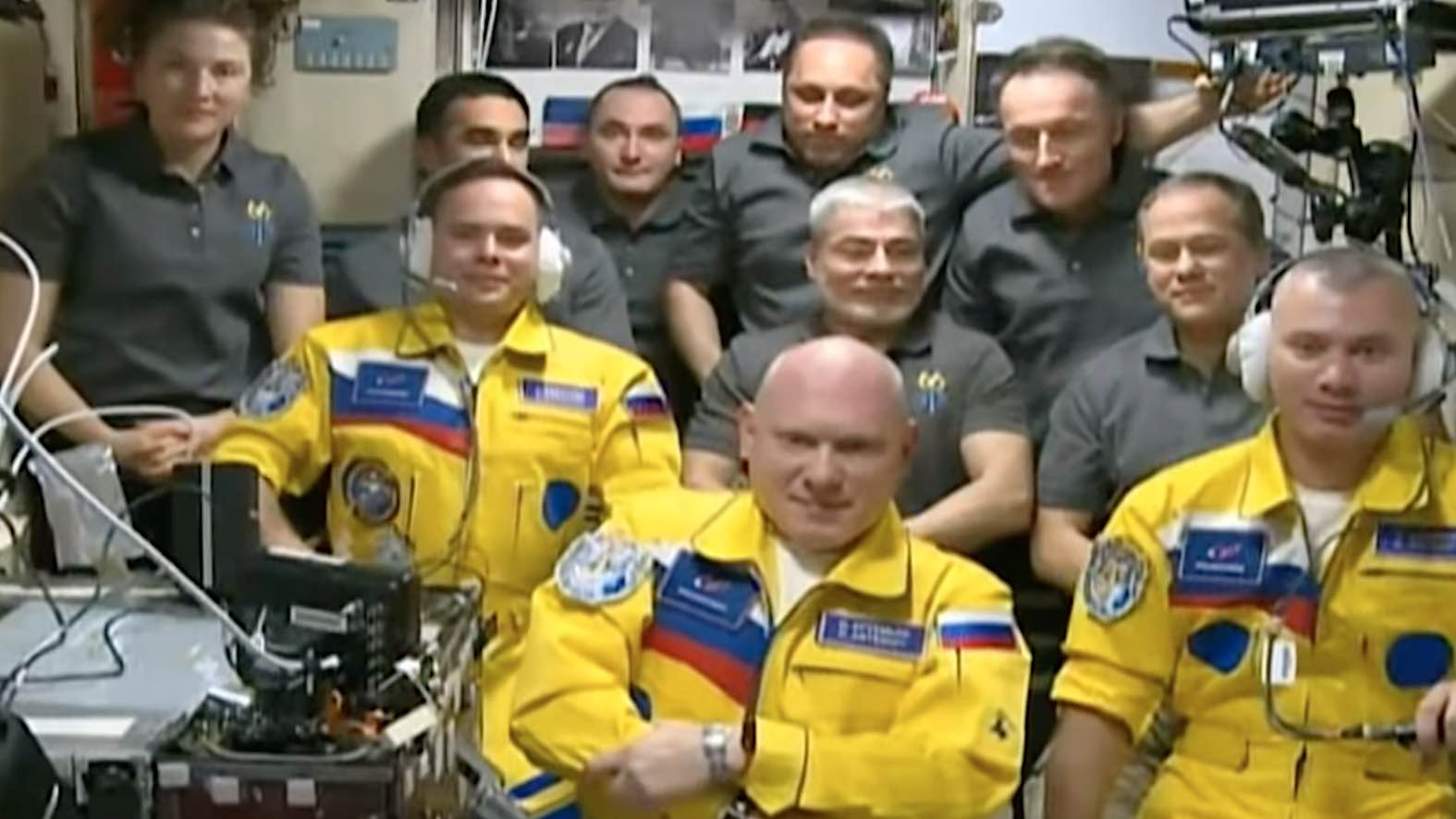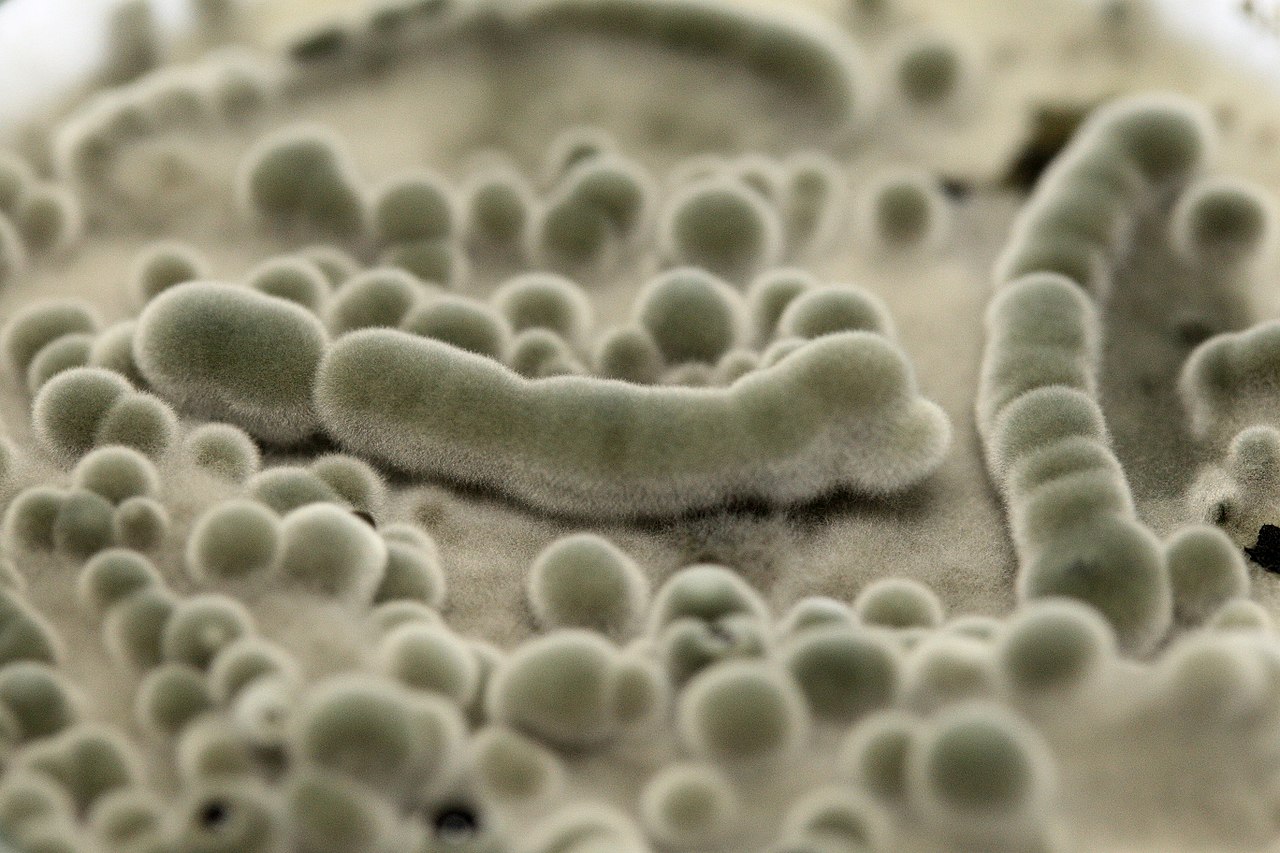This morning, at 11:17 AM EDT (08:17 AM PDT), the first all-private astronaut mission to the International Space Station (ISS) lifted off from Launch Complex 39A at NASA Kennedy Space Center in Florida. Designated Axiom Mission 1 (Ax-1), this mission consists of four commercial astronauts flying aboard the SpaceX Dragon Endeavour spacecraft that launched atop a SpaceX Falcon 9 rocket. The launch was live-streamed via NASA’s official Youtube channel (you can catch the replay here).
Continue reading “The Four Private Axiom Astronauts are off to the International Space Station”Stunning Image of ISS Taken From the Ground Shows two Spacewalking Astronauts

In our age, we’ve grown accustomed to pictures of astronauts inside the International Space Station, as they float in zero-G and tend their science experiments. We’re even getting used to images of spacewalking astronauts. But this is something new.
An image of two astronauts on a spacewalk, taken from the ground.
Continue reading “Stunning Image of ISS Taken From the Ground Shows two Spacewalking Astronauts”Three Cosmonauts Arrive at the ISS Wearing Bright Yellow Jumpsuits
About a month ago, Russian forces invaded Ukraine, placing NATO on high alert and creating a shock wave felt around the world. One place that has been particularly resilient to the effects of this conflict is the International Space Station (ISS). Even as tensions mount and the heads of space agencies engage in an online war of words, astronauts and cosmonauts continue to work and live together in orbit.
On the other hand, there have been some clear attempts to drag the ISS into political turmoil. Case in point: the recent photo that shows three Russian cosmonauts wearing bright yellow and blue jumpsuits, the colors of the Ukrainian flag! Depending on who you ask, this was either a display of unity with the people of Ukraine or just a coincidence. Opinions vary, but this was likely nothing more than oddly fortuitous.
Continue reading “Three Cosmonauts Arrive at the ISS Wearing Bright Yellow Jumpsuits”Wondering how Dependant ISS is on Russia? NASA Gives the Details

The Russian invasion of Ukraine has been dominating the news cycle lately. Amid tragic stories about rocket strikes, stalled offensives, and possible motives and outcomes, there’s been an ongoing “war of words” on social media. In particular, Dmitry Rogozin, the Director-General of the Russian State Space Corporation (Roscosmos), has been issuing thinly-veiled threats that Russia might be terminating its cooperation in space.
This included a video posted on Telegram by the state-controlled Russian news agency RIA Novosti that shows the Russian modules detaching from the International Space Station (ISS). In response to all the threats and hyperbole, NASA decided to host an FAQ session where they posted commonly-asked questions about the ISS. In what is eerily reminiscent of what happened in 2014, NASA let the world know that the ISS is still going strong and won’t be decommissioned anytime soon!
Continue reading “Wondering how Dependant ISS is on Russia? NASA Gives the Details”Russian Space Agency Tweets a Bizarre Video Showing the Russian Modules Detaching From ISS
The world is on high alert because of the unfolding crisis between Ukraine and Russia. Ever since Russian troops began deploying to the border regions between the two countries, there have been fears that conflict would ensue. Since the invasion began, there have also been genuine anxieties that it could spill over into neighboring states and even escalate to the point of a nuclear standoff. In the midst of all this, there have also been worries about the toll it might take on international efforts in space.
The International Space Station (ISS) is made possible through the cooperative efforts and funding of its participating space agencies – NASA (U.S.), Roscosmos (Russia), the ESA (Europe), the CSA (Canada), and JAXA (Japan). As such, it was rather curious when Russian state media company RIA Novosti posted a video online that showed Russian cosmonauts packing up and detaching the Russian segment from the ISS. Whether this represents a threat or a prediction, the message is clear: cooperation in space may be the next casualty of this war!
Continue reading “Russian Space Agency Tweets a Bizarre Video Showing the Russian Modules Detaching From ISS”If Russia Backs out of the ISS, SpaceX Could Help Keep the Station Operational
The ongoing conflict in Ukraine has wide-reaching implications, not only in the geopolitical sphere but also outside of the atmosphere. On the International Space Station (ISS), Russians work alongside astronauts from other countries that are currently imposing economic and trade sanctions in an attempt to force their country to stop their invasion of their neighbor. It was only a matter of time before that conflict escalated to the point of arguments over the ISS, but this time an unlikely hero appeared to defend the interests of Western nations – Elon Musk.
Continue reading “If Russia Backs out of the ISS, SpaceX Could Help Keep the Station Operational”How Well Does Concrete Work in Space?
Concrete is not the first material one usually thinks of when exploring space. Nor is it the focus of much cutting-edge research. The most common building material has been used by humanity for thousands of years. But surprisingly, little is still known about some of its properties, due in no small part to the limitations of the environments it can be tested in. Now, this most ubiquitous of materials will be tested in a new environment – the microgravity aboard the International Space Station.
Continue reading “How Well Does Concrete Work in Space?”NASA Details Its Plan for the End of the International Space Station in 2031

NASA says it plans to plunge the vestiges of the International Space Station into a remote part of the Pacific Ocean known as Point Nemo in early 2031, after passing the baton to commercial space stations.
In an updated transition report just delivered to Congress, the space agency detailed the endgame for the space station, which has been hosting international crews continuously since the year 2000 — and hinted at what its astronauts would be doing in low Earth orbit after its fiery destruction.
“The private sector is technically and financially capable of developing and operating commercial low-Earth-orbit destinations, with NASA’s assistance,” Phil McAlister, NASA’s director of commercial space, said in a news release. “We look forward to sharing our lessons learned and operations experience with the private sector to help them develop safe, reliable, and cost-effective destinations in space.”
Continue reading “NASA Details Its Plan for the End of the International Space Station in 2031”Fungi Were Able to Absorb Radiation on the ISS. Could Astronauts Grow Their own Radiation Shields in Space?
A lack of effective radiation shielding is one of the biggest challenges still to be overcome if humans are to embark on long-term voyages into deep space. On Earth, the planet’s powerful magnetosphere protects us from the deadliest forms of radiation – those produced by solar flares, and galactic cosmic rays arriving from afar – that stream through the Solar System. Astronauts on the International Space Station, some 408km above the Earth, receive elevated levels of radiation, but are close enough to Earth that they still receive some shielding, and can stay on orbit for up to a year. The same can’t be said for astronauts traveling further out, to the Moon, for example, or, someday, to Mars. Future deep space voyagers will need to bring their own shielding with them – or, as a new paper suggests – grow it along the way.
Continue reading “Fungi Were Able to Absorb Radiation on the ISS. Could Astronauts Grow Their own Radiation Shields in Space?”Crew-2 Safely Returns from ISS — without a working toilet

Four astronauts splashed down safely in the Gulf of Mexico aboard their SpaceX Crew Dragon Endeavour capsule, despite one of the parachutes not deploying immediately. Their spectacular return in darkness from the International Space Station capped off the record-setting mission for the SpaceX Crew-2, with the longest spaceflight by a U.S. crewed spacecraft. Their 199 days in orbit surpassed the 168 days set by NASA’s SpaceX Crew-1 mission earlier this year.
Continue reading “Crew-2 Safely Returns from ISS — without a working toilet”





